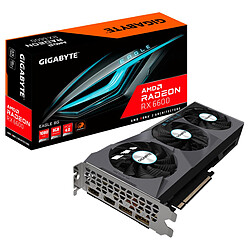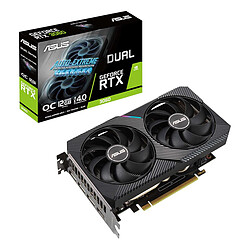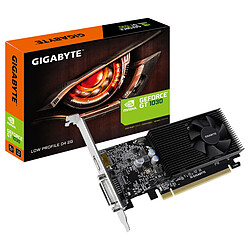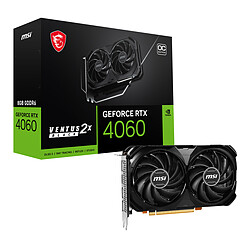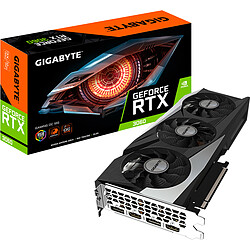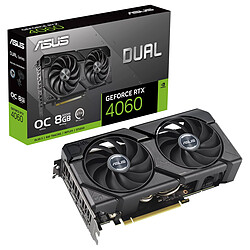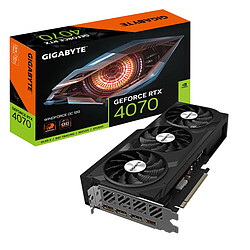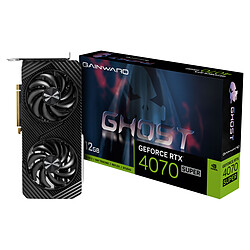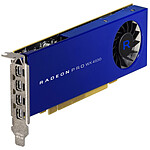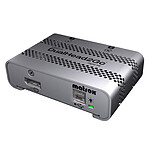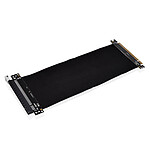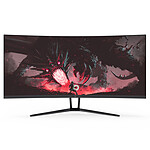Good to know
Graph… what?
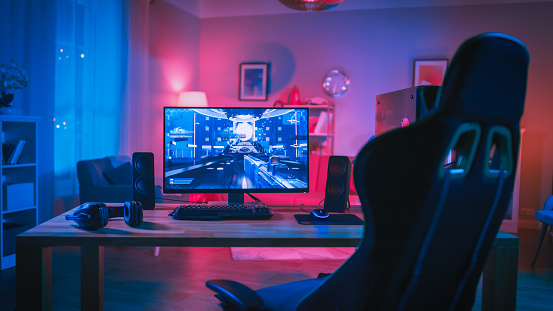 A graphics card! Alright, maybe you know what a graphics card is, but maybe you don't know what's on it?
A graphics card! Alright, maybe you know what a graphics card is, but maybe you don't know what's on it?
Here some rules to keep in mind:
- Not every PC has a graphics card! If your computer is intended for office use (or at least not very graphic), a GPU (G="Graphics") already integrated in any processor is more than enough. And some can be very powerful!
- A graphics card is made up of different elements:
1- A graphics processor, which determines the frequency (expressed in MHz or GHz) and the 7 nm process (that refers to the size of the electronic elements)...
2- A RAM memory, which ranges from 1 to 32 GB and has different names (GDDR5, GDDR6, etc)
3- A cooling system, which can be replaced or multiplied by other additional fans or watercooling... (useful for large graphics cards that are really demanded!).
NVIDIA vs AMD : The War of the Titans
There are two graphics card manufacturers in the world: Nvidia et AMD, two brands with different attributes to choose from according to your needs.
- AMD is all about sobriety and good value for money. Their cards have fewer on-board options, but you will find all the essentials: multi-screen management, Freesync to prevent image tearing, automatic resolution adaptation or VR optimisation... and that's quite all!
- Nvidia, the market leader. Full of various technologies, their graphics cards are famous for their great performances. Improved lighting, frequency, good looking in addition to the usual ones, everything is done to optimize your display... at a higher price.
Asus, MSI, Gigabyte… What's this?
When you look at the name of a graphics card, you can see many brand names such as "Corsair", "MSI", etc. attached to the rest of the description. These are the "assemblers", those who assemble the cards by adding their own ingredients: more memory, better cooling, frequency... Do not hesitate to check the options of your future beloved card offered by the assembler!
I want to be amazed!
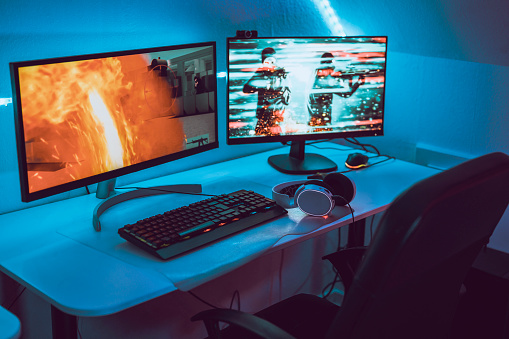
OK... but if you have a low-powered PC or a small screen, there's no point in aiming too high!
Above all, choose a card according to YOUR needs..
- Choose a card compatible with your motherboard, otherwise it's useless! Oh and yes, also check its size: it would be a shame if it couldn't fit in your little case!
- Adapt your power according to your screen (don't hesitate to read our PC monitor guide...): Full HD resolution (1920 x 1080p), 2K/WQHD (2560 x 1440p) or 4K (3840 x 2160p), VR or 3D use... It's up to you!
- The race for power is not necessarily useful or visible. On the other hand, don't hesitate to check its power consumption (indicated in Watts): a less greedy graphics card is also a quieter card... and on the contrary, a big graphics card means a power-hungry card and a big power supply to install!
You don't know which power supply is compatible with your graphics card? Our PC Builder will tell you!
- Check the proposed connectivity and your own equipment: Display Port (the most recent and therefore the most recommended), DVI, HDMI, VGA...
I just want to...
Surf, watch movies...

Don't bother yourself: a graphics chip already built into your processor will do just fine. If you're planning to play a few games that are accessible to everyone, you can go for a small entry-level « fanless », i.e. without cooling and therefore silent. Be careful with very compact dedicated home cinema PCs and choose « mini ITX » cards, otherwise they will never fit!
Our selection ›
Play Fortnite!
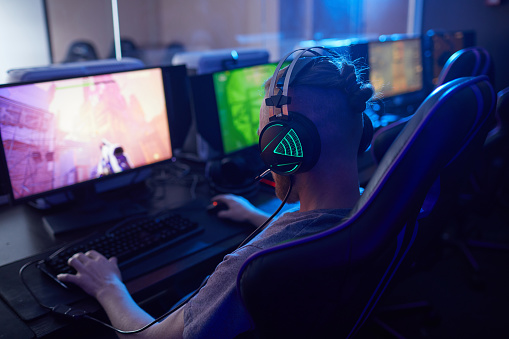
Want to play on your Full HD screen? An entry/mid-range graphics card (200/300€) will do it! 6 GB of memory (on the graphics card, not the PC!) will be enough, and you can even go for multi-screen for occasional but comfortable gaming. However, be careful! Don't go beyond a 27-inch screen: the resolution will quickly become too greedy.
Our selection ›
Play the latest AAA games

For more intensive games, 2K resolution or higher power requirements, the higher end cards (300€ minimum) will allow you to better enjoy details, fluidity or VR at a more affordable price. An 8 GB will give you more flexibility, especially if you always ask for more!
Our selection ›
Play in 4K at 144 Hz

Your dream is the best, the biggest... Very good: after checking your hardware, you can go eyes closed for a very high range graphics card. They are expensive but powerful, and will give you the best of the best: amazing details, optimised speed... some even have two processors for even more power. However, beware of their cooling, the size of the case... and the noise!
Our selection ›
As the core element of a powerful gamer PC, the graphics card should be the component you choose carefully so you don't get frustrated with your gear's performance during your gaming sessions. With the recent releases of the RTX 3000 and the new Radeon RX, there is a wide range of choice in terms of GPU for gaming and heavy apps. With the LDLC's 2021 Graphics Card Buying Guide, find the right graphics card for your gaming style and equipment. For the assembly of a PC or an upgrade of your machine, find on LDLC.com the best graphics cards trending now and finally play in the best conditions!
Framerate and resolution: 2 elements to take keep in mind when choosing a graphics card
For a gaming use, a graphics card is mainly chosen according to the types of games you play (and therefore the framerate you should go for) but also the definition of your screen. The graphics options are the adjustment cursor to gain in fps or in display quality.
For example, visual quality is more important than framerate in adventure games. This type of game generally offers good playability at 60 fps. On the other hand, more competitive titles such as single-player or multiplayer FPS require a higher frame rate. In multiplayer games, playing at more than 120 fps will give you a clear advantage over your opponents by reducing latency, ghosting and blurring effects.
With this in mind, and assuming that your PC gamer monitor offers the right refresh rate for your games, let's take a look at the most recommended graphics card models for each resolution.
Best graphics card for Full HD 1080p gaming (2021)
For this resolution, the mid-range at around €200-300 allows you to obtain good results on 24 or 27 inch screens. We recommend the GTX 16XX range from Nvidia and the RX 5XX from AMD. The entry/middle range is a good choice if you are looking for a graphics card to comfortably play Fortnite.
- The GTX 1660 will allow you to reach 60 fps with the graphics at maximum or Medium depending on the game.
- The Radeon RX 580 is the best alternative from AMD for a slightly lower price.
- The RTX 2060 is the entry range card with Turing architecture and that will allow you to enjoy Ray Tracing.
Best graphics card for 2K 1440p gaming (2021)
Here you will have to invest more if you want to run the latest Triple A. The mid-range is between €500 and €600.
- The AMD RX 5700XT and the RTX 2070 Super were the best options for 1440p gaming until the RTX 30XX came out. Their similar prices to the RTX 3070 make them obsolete graphics cards. Nevertheless, it is possible to find good deals on the second-hand market.
- The 3070 is currently the best choice for 1440p gaming at 60 fps. At this resolution, however, it will be too low to reach 144 fps. On the other hand, the 3070 is an excellent option if you are looking for a VR graphics card.
- The RTX 3080 is good enough for 1440p 144 Hz. Finally, a graphics card for Ultrawide in High! However, you will probably have to make some graphical concessions on some games.
Best graphics card for 4K 2160p gaming (2021)
With the RTX 30, Nvidia wants to democratise 4K gaming and finally offer a stable solution for this resolution. With a lower price point, the top of the range is now between 800 and 1,000 euros.
- The RTX 3080 is definitely the right graphics card for everything. At ease with high resolutions, 4K at 60 fps is finally possible. On particularly graphics-intensive games, it maintains 40 fps without flinching. Looking for a graphics card for Flight Simulator 2020? Then go for it!
- The RTX 3090 is Nvidia's most powerful graphics card, the ultra-high end, and the best for 4K. However, it is aimed for higher budgets, with custom versions costing over €1,500.
 A graphics card! Alright, maybe you know what a graphics card is, but maybe you don't know what's on it?
A graphics card! Alright, maybe you know what a graphics card is, but maybe you don't know what's on it?







